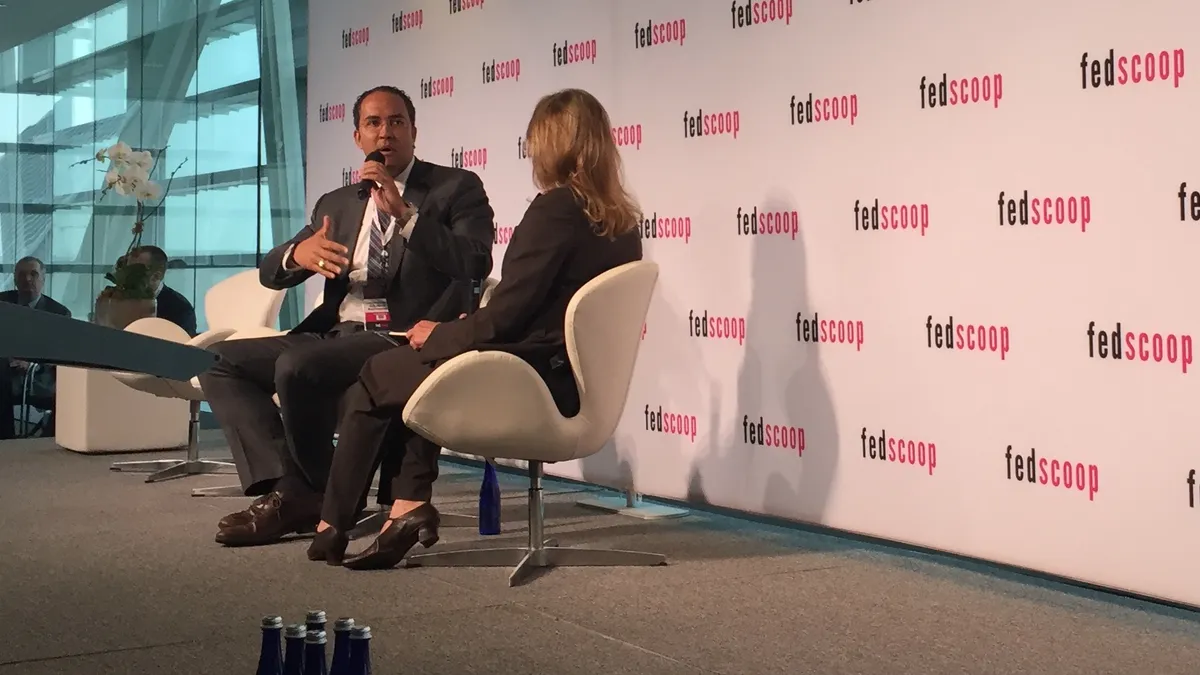Dive Brief:
- CIOs at federal agencies need to have full authority and the agility to change and adopt new technology, according to Rep. Will Hurd, R-TX, speaking at the FedScoop IT Modernization Summit Tuesday. "You can't hold the CIO accountable if they don't have the authority and the responsibility to manage everything that deals with their network."
- Hurd, the sponsor of the Modernizing Government Technology Act of 2016, has made it part of his mission in Congress to help upgrade government technology and create a more innovative federal technological backbone. Though the MGT stalled in the Senate after passing through the House last year, Hurd plans to reintroduce it in the coming weeks. Hurd made some tweaks to the legislation in an effort to gain more support and receive a favorable assessment from the Congressional Budget Office of the bill's budget impact.
- Improving government technology is neither a partisan or philosophical issue, because people want "things that work," said Rep. Steny Hoyer, D-MD, and a co-sponsor of the MGT, in a speech at the Summit. "If Americans see that their government agencies are as connected, responsive and technologically nimble as the businesses who's apps and websites they use every day, it will go a long way toward renewing their faith" in government.
Dive Insight:
Government agencies have a modernization problem. The federal IT budget is $80 billion, yet the government has to spend 75% of the funds just on operations and maintenance of legacy systems, according to report from the Government Accountability Office.
The problem becomes systemic in the government. Though an agency might want to bring in newer cloud-based technologies, CIOs and other IT leaders often find the network cannot support an increased load without an upgrade. Then, even if the agency is ready for new technology, the procurement process can drag on for months and sometimes even years.
That's one of the reasons why Hurd and Hoyer have championed the MGT, calling for a more efficient way to bring technology into the government and allowing agencies to innovate so they can better provider goods and services to citizens.
Though it passed in the House, the MGT stalled in the Senate because of an assessment by the Congressional Budget Office, which estimated the proposed legislation would cost $9 billion to implement. The bill, however was intended to be a cost-saving measure for the federal government, allowing agency technological transformation and help reduce cost of simply maintaining systems.
Hurd and Hoyer are not alone in their transformation efforts. The White House is also working to make government more focused on innovation. In a presidential memorandum, earlier this week President Donald Trump established the White House Office of American Innovation, to be headed by Jared Kushner, a senior advisor to the president and Trump's son-in-law.
The office will "bring together the best ideas from government, the private sector and other thought leaders" to help the U.S. solve "today's most intractable problems," according to the memorandum. The goals is for the office to implement tested private sector models to help spur government innovation and job creation. This means that Kushner, in an effort to help modernize government, will have to tackle the archeological layer of legacy technology that persists across agencies.














